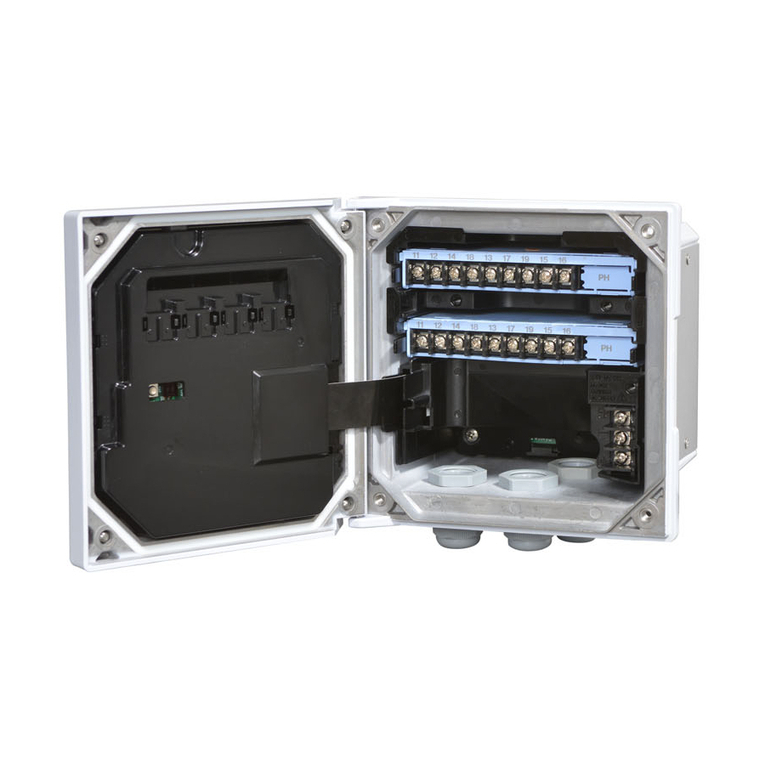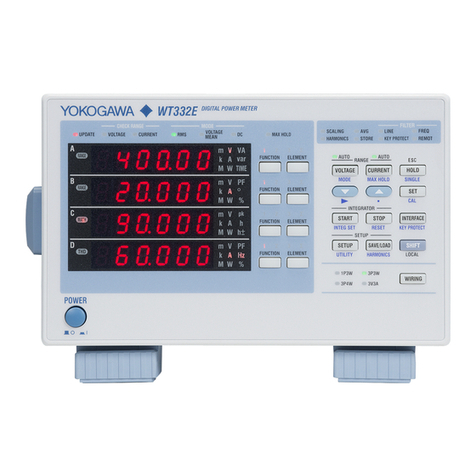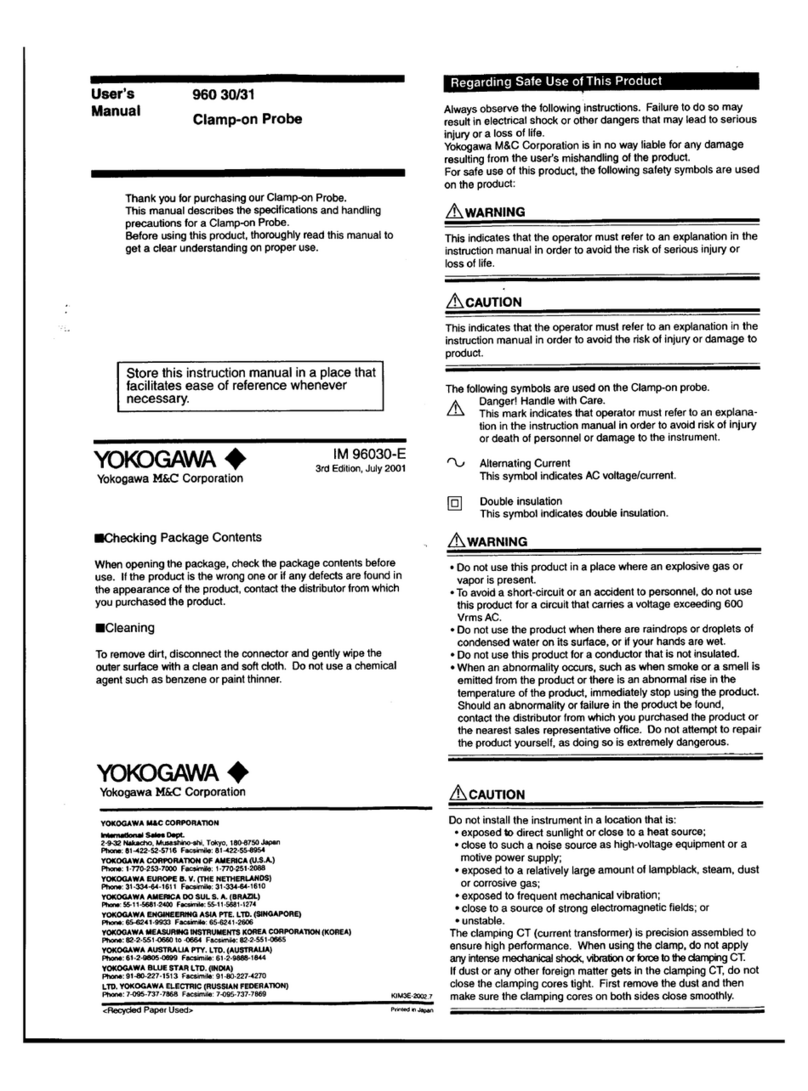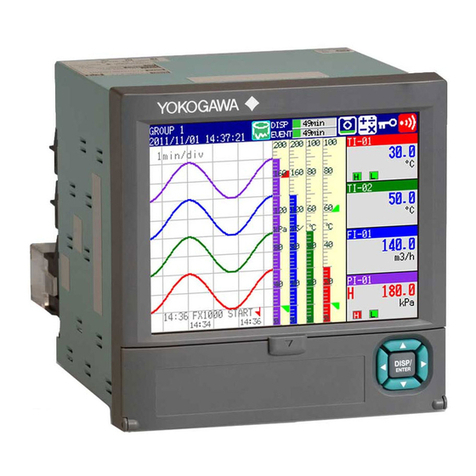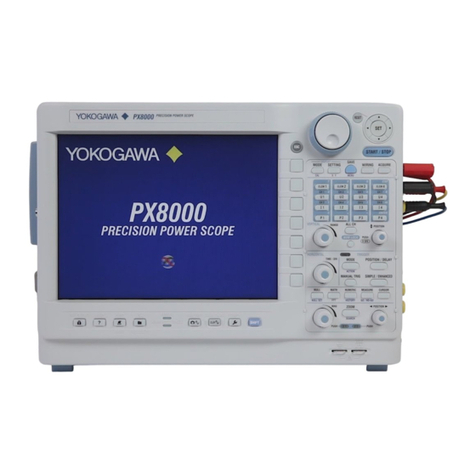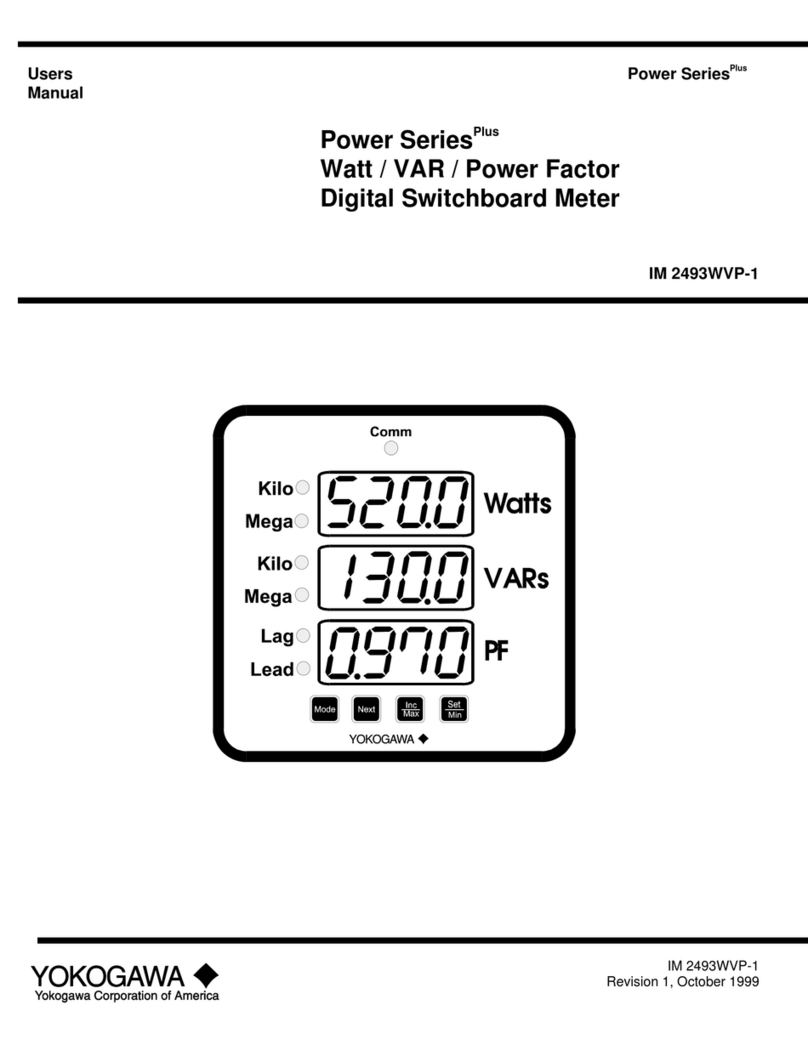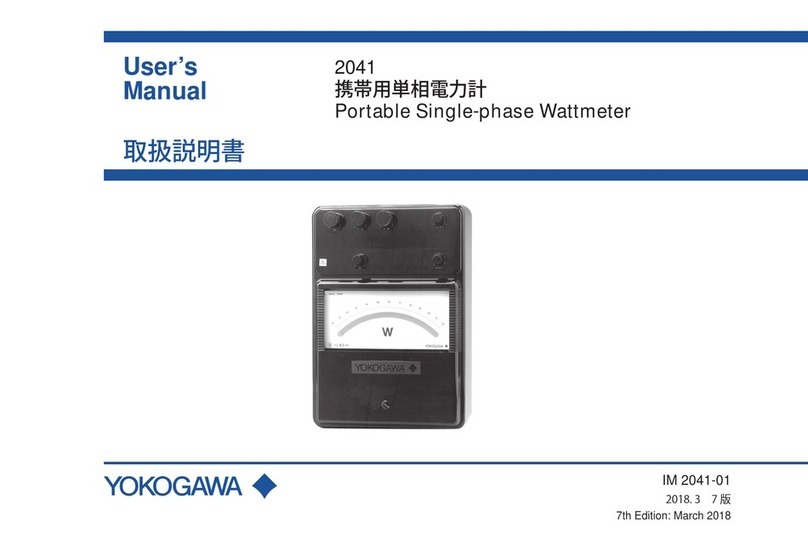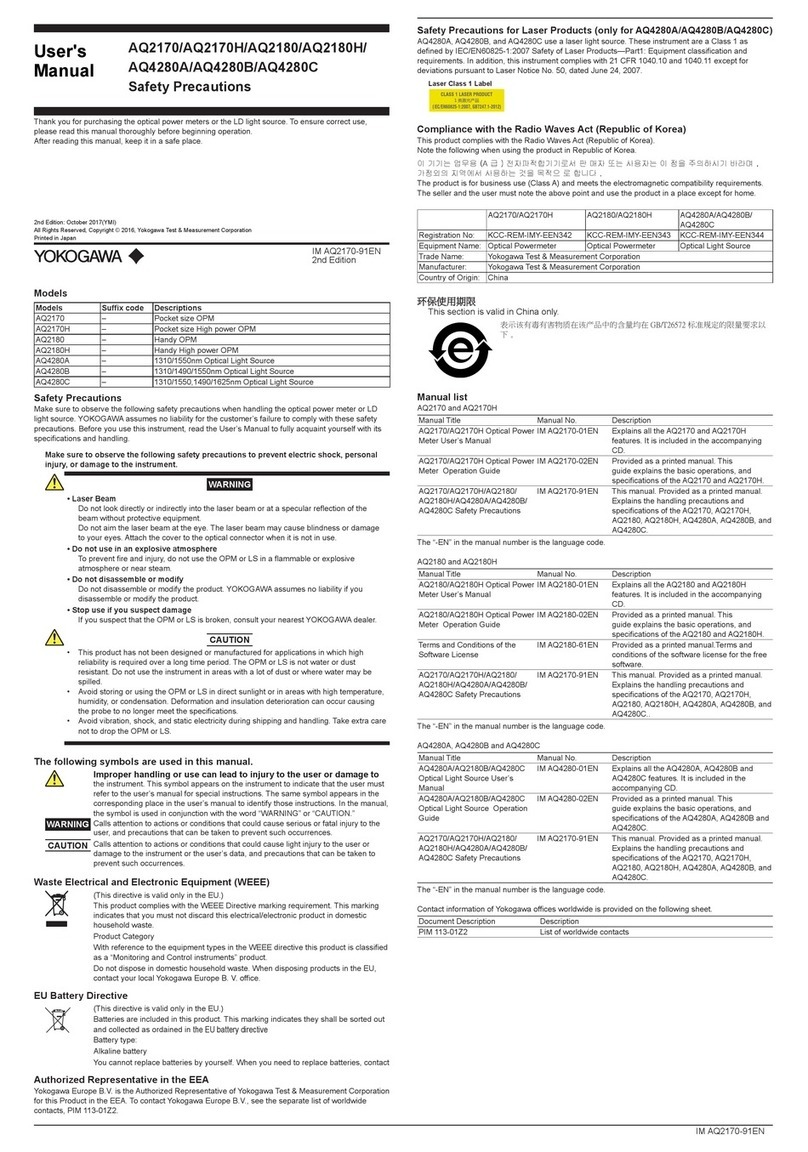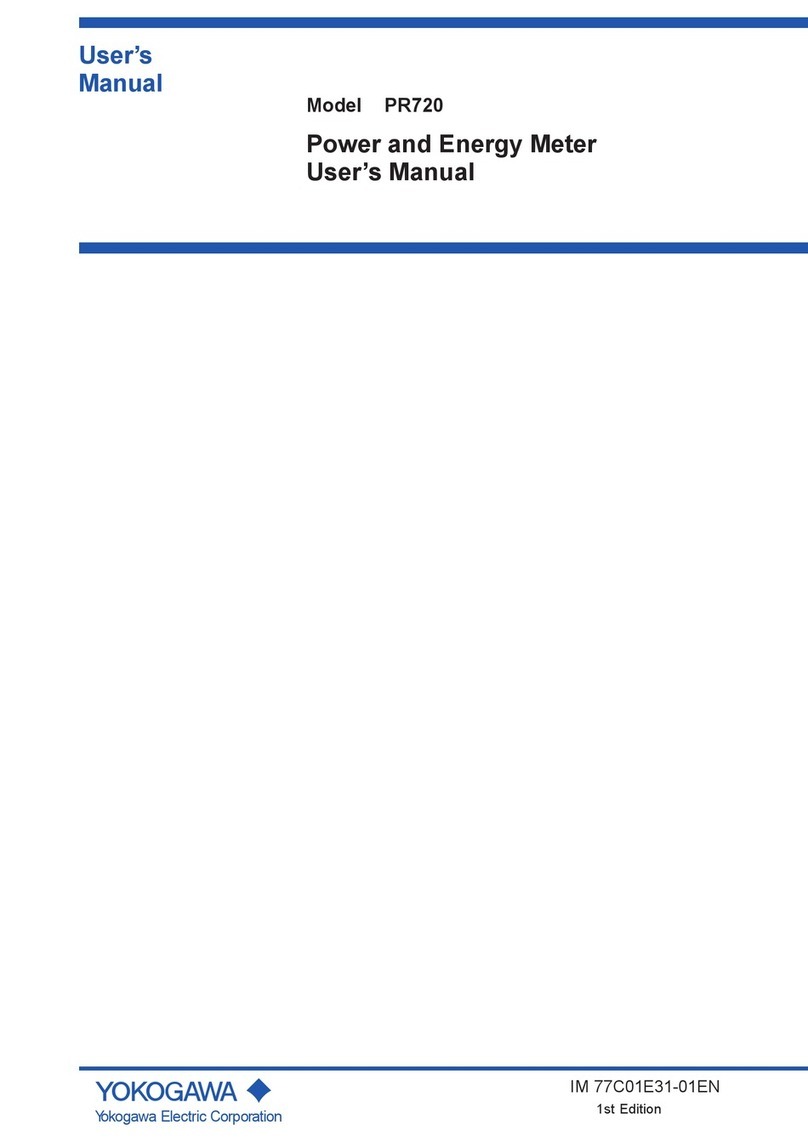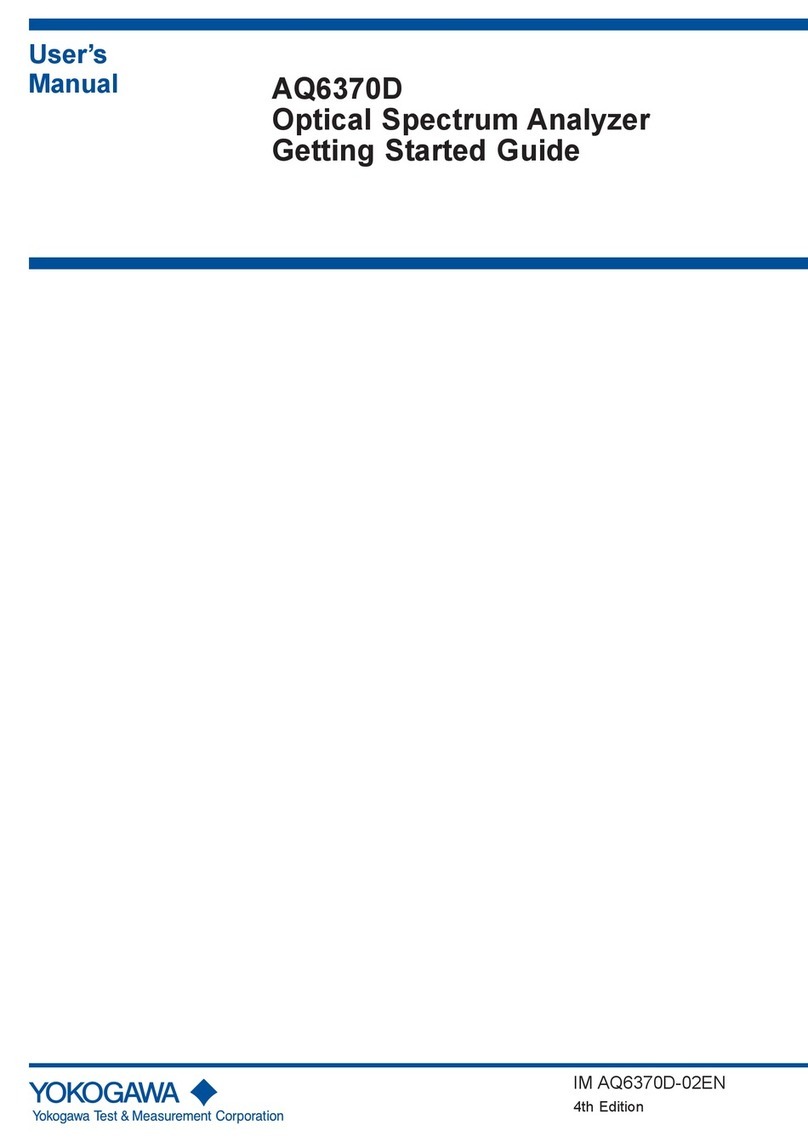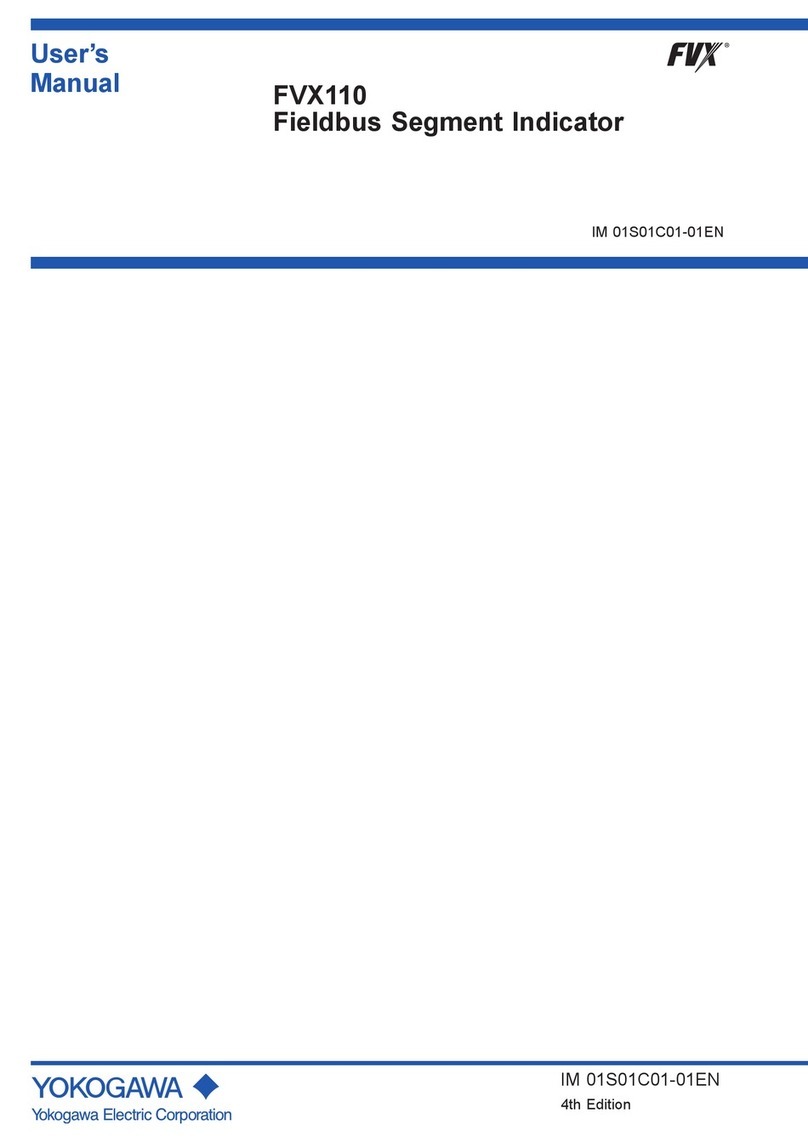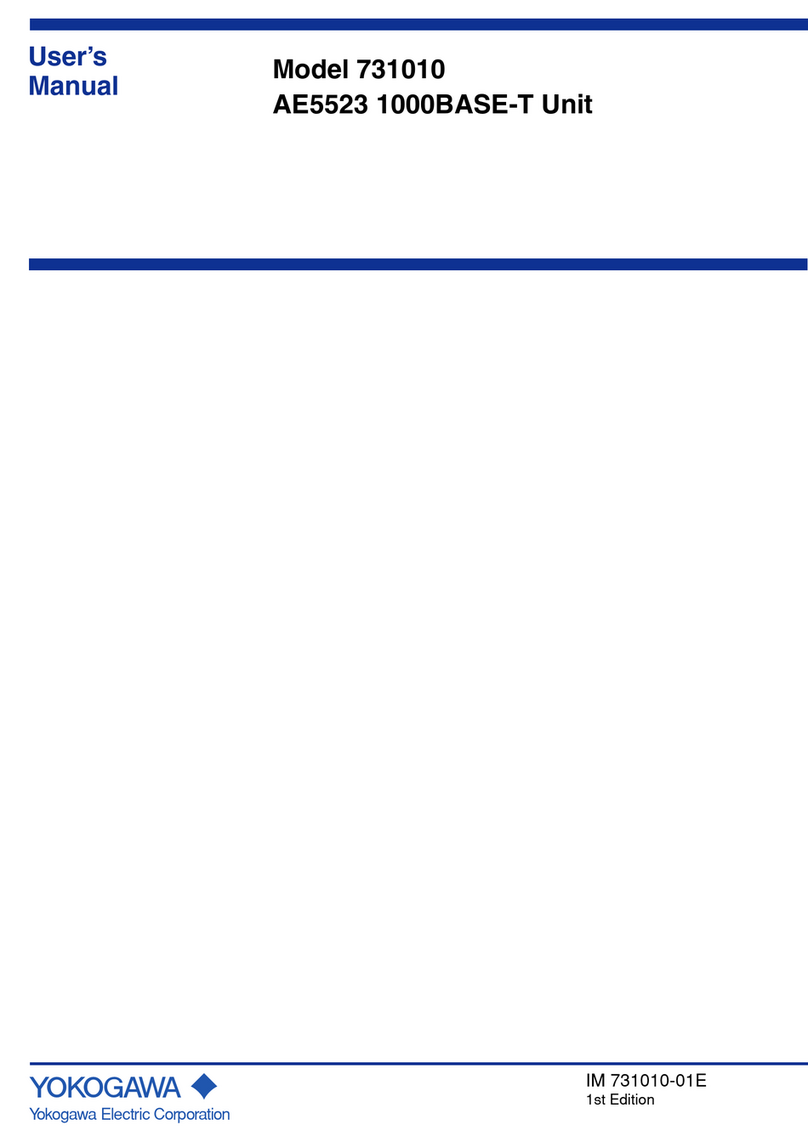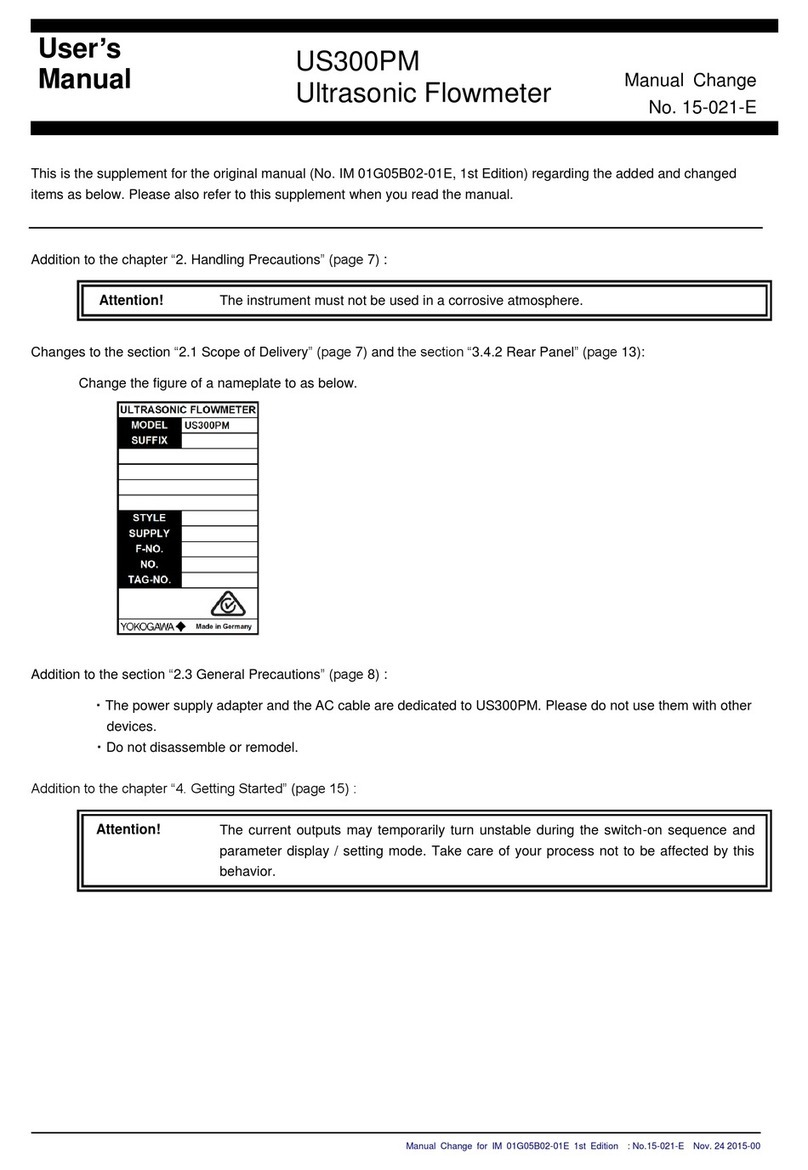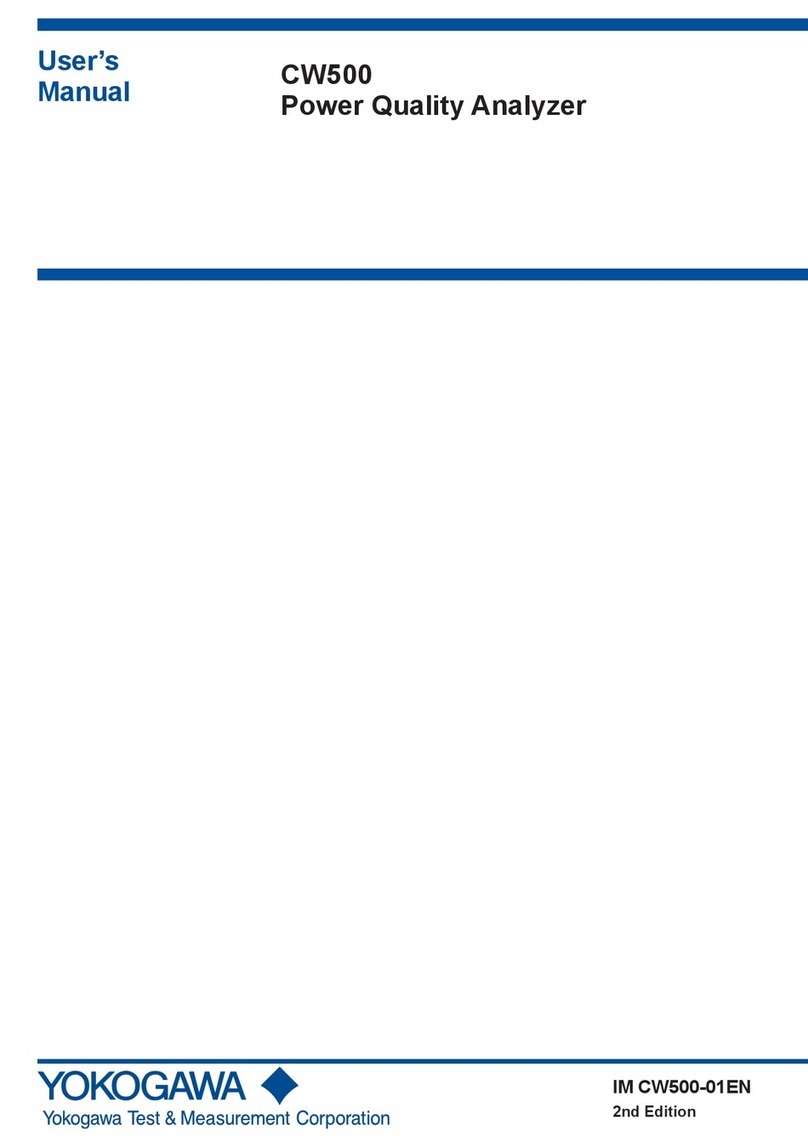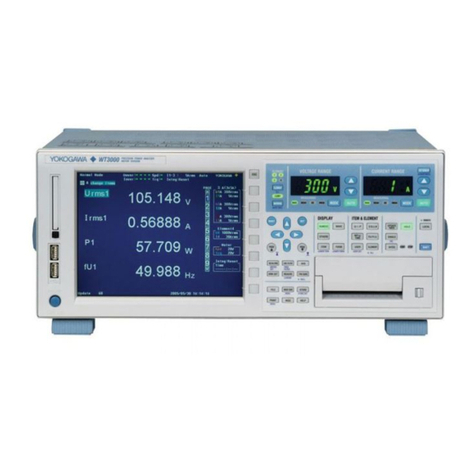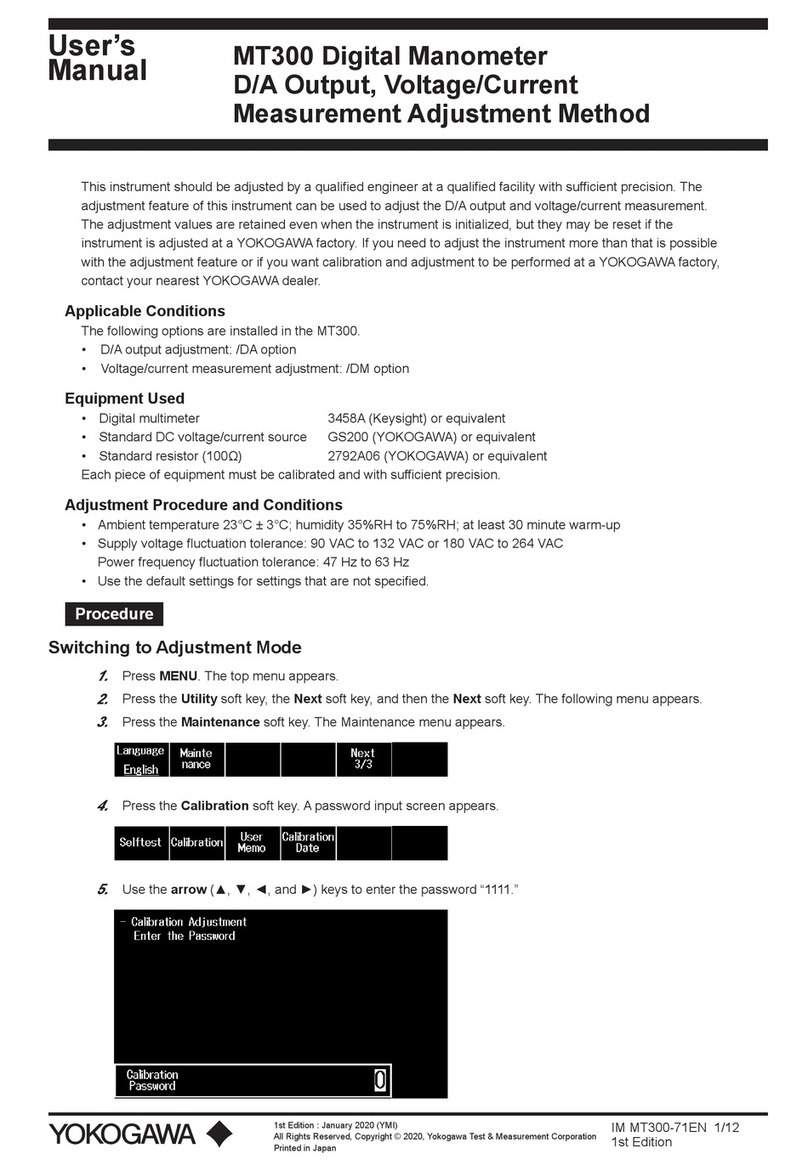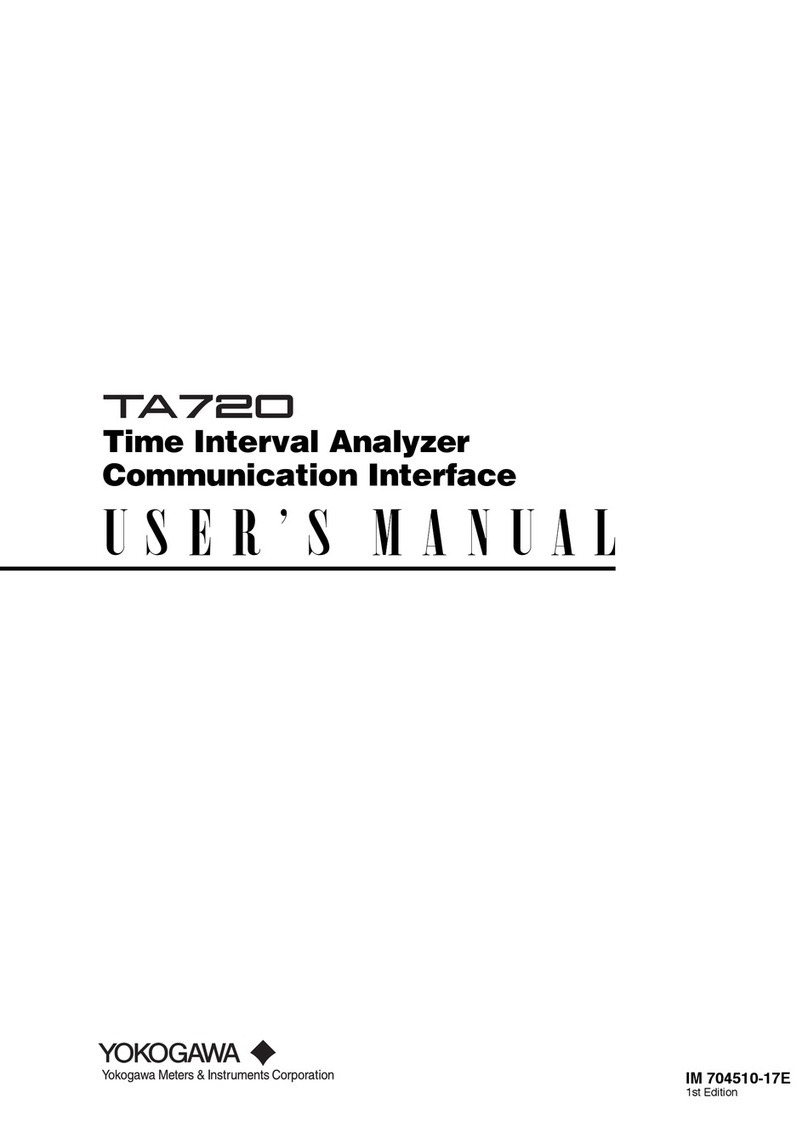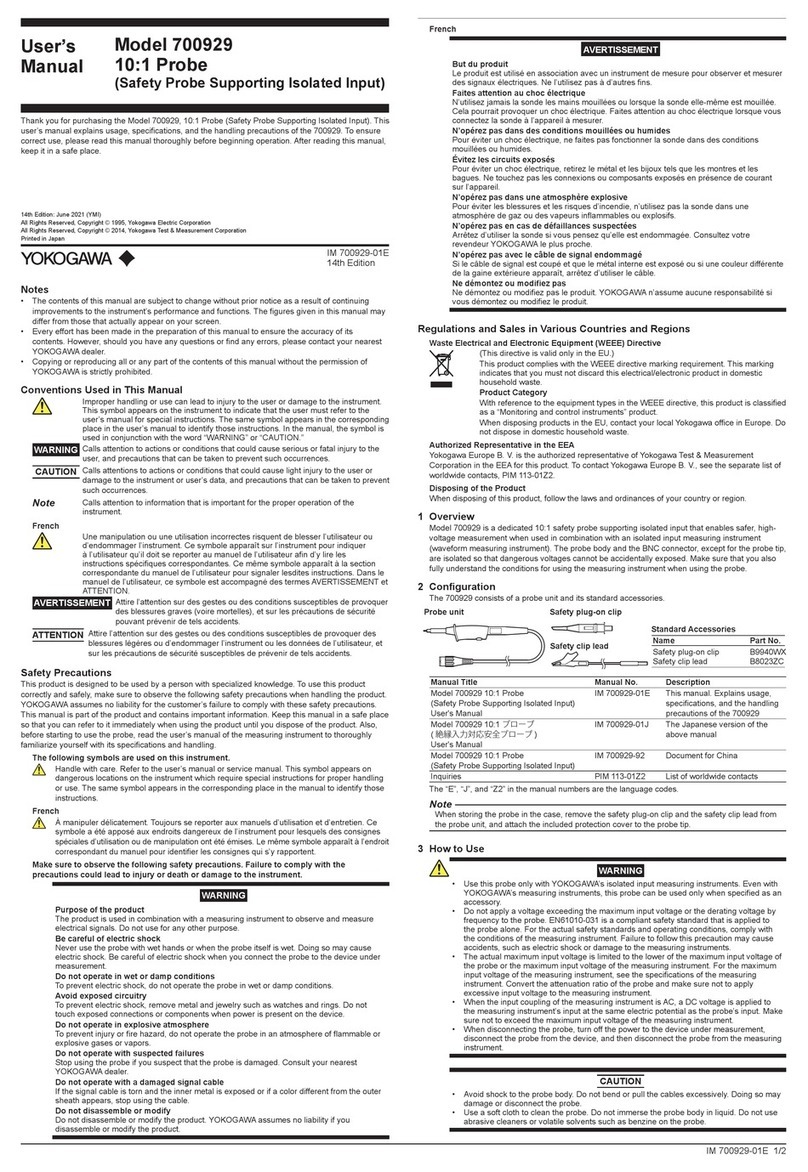
7
IM12B06J02-00EN-P
3. INSTALLATION
3.1.1 P
For accurate pH measurement, a gel
layer must be formed on the mem-
brane surface. For this reason, the
pH-sensitive part of the electrode
should be soaked for 24 hours before
the electrode is used.
When an electrode has been stored
dry, and you need to use it immediately
do so, but as a result, initial regular
calibration will be required until the gel
layer is formed.
The electrode, when dispatched by
Yokogawa, has a protective cover cap
-
brane which ensures you can use the
electrode immediately. Flow electrodes
opening, which is sealed with a cap or
stopper.
NOTE:
Before installation, the above men-
tioned stopper and protective cover
cap must be removed. If required, the
AGC55 may be connected to a reservoir
of electrolyte solution. To maintain a
-
tems, the reservoir must be placed so
that the level of the electrolyte is above
the level of the measuring liquid. Only
under these circumstances will the
correct electrical contact between the
reference system and the measuring
liquid be guaranteed.
3.1.2. M
The combined electrodes must be
connected with a Coax cable type
WU20-PC, marked with a blue strip. In
areas where electrical interference is
likely, we recommend using the Triax
electrode cable type WU20-LT.. marked
with a blue strip. The cables meet the
requirement of IP65 and can be used
shown in Fig. 1.
The Yokogawa nut can be ordered under
part number: K1500DW.
RESERVOIR FOR SC21C-AGC55
The reservoir, including the connection
kit and tubing, can be ordered sepa-
rately. The connection of the tubing to
the sensor is described in Fig. 5. At the
reservoir side, Yokogawa provides a so
called swagelock connection.
NOTE: Avoid air bubbles in the tubing.
3.2.1 P
After removing the dust cap from the
connector and the protective cover from
the measuring part, the electrode is
ready for use.
NOTE:
For accurate measurements with a Re-
dox/glass electrode, a gel layer must be
formed on the glass membrane surface.
For this reason, the membrane should
be soaked for 24 hours before the
electrode is used. When an electrode has
been stored dry, and you need to use it
-
-
quent re-calibration will be required until
the gel layer is formed. The electrode,
when despatched, has a protective cover
glass membrane which ensures you can
use the electrode immediately.
3.2.2 Mounting
The mounting of the combined Redox/
carried out, as shown in the following
into a PG13.5 process connection. The
3 - 4 on the next page.
Fig. 1. Yokogawa connec-
